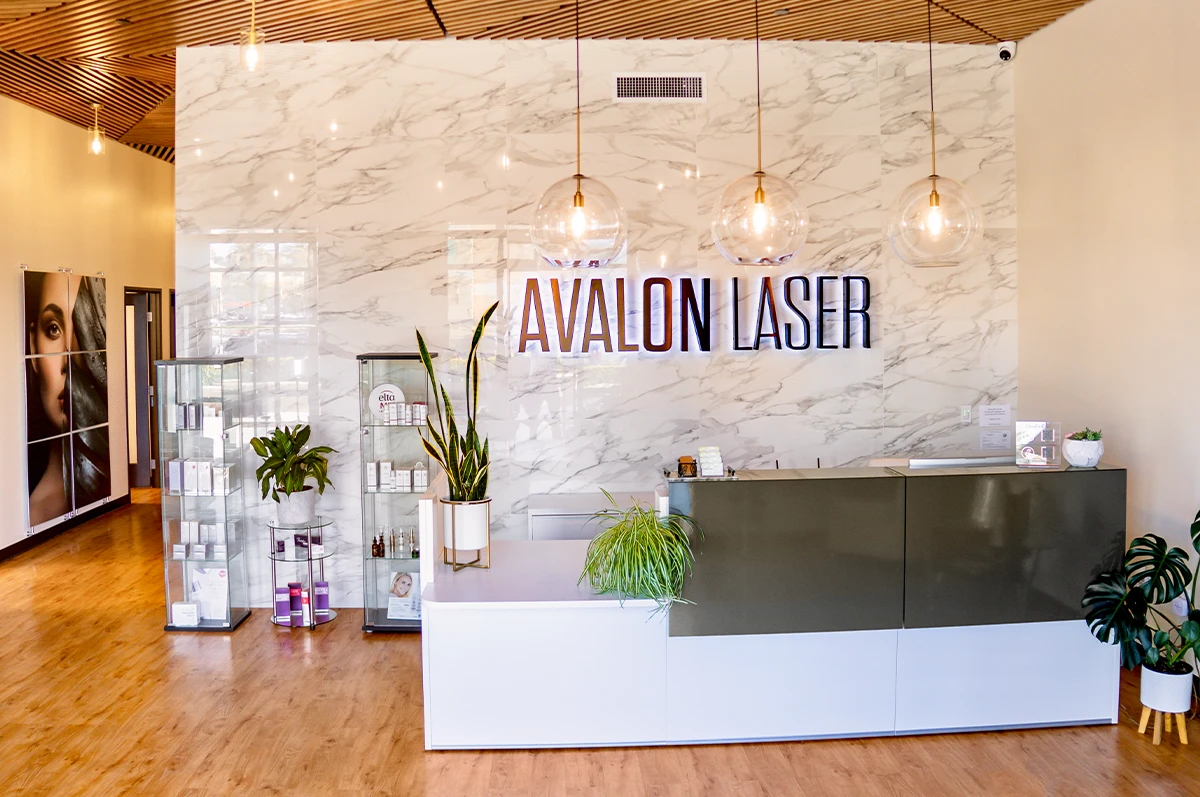When it comes to skin rejuvenation, chemical peel vs laser resurfacing is one of the most common comparisons people make. Both treatments share the same ultimate goal — smoother, clearer, and more radiant skin — but the way they achieve that goal is entirely different. These two cosmetic treatments work beneath the surface to improve skin texture, reduce fine lines, and address sun damage, hyperpigmentation, and acne scars.
So how do you know which treatment is better for your skin concern or skin type? Let’s break it down in detail.
Chemical Peel
A chemical peel uses a chemical solution to the skin to exfoliate the outer layers of the skin. This process triggers cell renewal and collagen production, revealing the skin underneath that’s fresher, smoother, and more even in tone.
Mechanism
During a chemical peel, your provider applies a chemical solution that penetrates a specific layer of skin. The chemical solution exfoliates dead skin, causing it to exfoliate and eventually peel. As the old skin peels away, new cells form, minimizing uneven skin, fine lines, and skin imperfections.
Chemical peels involve different intensities — light peel, medium peel, and deep peel — depending on how aggressive the chemical solution is and the depth of the peel. Peels involve acids like glycolic, lactic, or trichloroacetic acid that resurface the skin layer in a controlled way.
Areas Treated
Chemical peels are ideal for the face, neck, and hands. They target uneven skin tone, sun damage, and hyperpigmentation, while peels can also minimize mild acne scars and texture issues.
Cost
The cost of a chemical peel depends on the type of peel and provider, but prices typically range from $150 to $300 for a light chemical peel, $400 to $700 for a medium peel, and up to $3,000 for a deep chemical peel.
Duration and Frequency
A light peel offers a subtle refresh with minimal downtime, while medium to deep peels provide more dramatic results but require longer recovery. Peels require regular maintenance usually every 4 to 6 weeks for light peels, while deep peels require only one session for long-term improvement.
Types
- Superficial peel: Uses mild acids; best for light exfoliation.
- Medium peel: Reaches deeper layers; great for sun damage and fine lines.
- Deep peel: Penetrates deeply; best for deep wrinkles and significant hyperpigmentation.
Laser Resurfacing
Laser resurfacing is a skin resurfacing treatment that uses a laser — concentrated light energy — to remove damaged skin cells and boost collagen production. This resurfacing treatment enhances texture, tone, and elasticity.
Mechanism
Laser resurfacing uses focused beams to vaporize the outer layers of the skin. This treatment that uses concentrated beams of light precisely targets imperfections, leaving surrounding tissue unharmed.
There are two main types of laser:
- Ablative laser (like CO2 laser): Removes thin layers of the skin and is highly effective for deep wrinkles and acne scars.
- Non-ablative laser: Heats the underlying skin without removing surface tissue to stimulate collagen production with less downtime.
Both types of laser technology improve skin tone and texture, though resurfacing uses more intensity than peels.
Areas Treated
Common treatment areas include the face, chest, and neck. Laser resurfacing may also help with sun damage, uneven skin tone, and fine lines.
Cost
The price of laser resurfacing treatments depends on the type of laser and provider. For example, How much is laser scar removal explains that costs can range from a few hundred to several thousand dollars per session depending on the condition being treated.
Duration and Frequency
Results with laser are often long-lasting. Maintenance depends on the intensity of the treatment — non-ablative procedures may require multiple sessions, while ablative laser treatments deliver major improvement in one go. Curious about longevity? Here’s How long does laser treatment last with details about post-treatment durability.
Types of Laser Treatments
Laser skin resurfacing can be fractional or full-field. Fractional laser treatment targets micro-zones of skin for quicker healing, while full-field laser resurfacing uses higher energy for more dramatic rejuvenation.
Chemical Peel vs Laser Resurfacing: Key Differences
| Factor | Chemical Peel | Laser Resurfacing |
| Mechanism | Applying a chemical solution to exfoliate damaged cells | Resurfacing uses focused laser energy to vaporize damaged skin |
| Depth | Light, medium, or deep penetration | Ablative or non-ablative lasers target surface or deep tissue |
| Recovery | Hours to weeks depending on peel strength | Minimal downtime for non-ablative, longer for ablative |
| Ideal for | Mild texture, tone, pigmentation | Deep wrinkles, severe scarring |
| Cost | $150–$3,000 | $800–$4,000+ |
| Frequency | Light peels monthly; deep peels require fewer sessions | Non-ablative lasers need multiple sessions; ablative usually once |
Both treatments improve skin and address specific skin concerns, but your skin type and skin tone matter. People with different skin shades must be cautious with laser resurfacing since deeper skin tones may be more prone to pigmentation.
How to Know Which One Is Right for You
If you’re unsure which treatment is best, consider your skin concern and desired downtime. Chemical peels are better for mild uneven skin tone, fine lines, and general skin rejuvenation, while laser resurfacing may be the better option for deep wrinkles, acne scars, or heavy sun damage.
Consult a qualified provider or a Laser treatment in San Diego clinic to evaluate your treatment is right for your skin type.
Which Is Better for Wrinkles?
When targeting fine lines and deep wrinkles, laser resurfacing often wins. The collagen production boost from ablative laser treatments offers long-term results. Still, medium peels may require repeated sessions for steady results, while a single CO2 laser session can tighten and smooth the skin dramatically.
However, peels provide subtle results faster with less downtime — so if you’re not ready for intense recovery, a medium peel or light peel might be the way to go.
Aftercare and Maintenance for Both Treatments
What to Expect Post-Treatment
After a chemical peel or laser resurfacing, your skin may appear red or flaky for a few days. This is normal, it’s part of the skin resurfacing process where the skin underneath gradually appears brighter and smoother.
For chemical peels and laser resurfacing, avoid sun exposure and use gentle moisturizers and SPF daily.
Skin Care Tips to Prolong Results
To improve skin longevity:
- Keep your skin hydrated.
- Avoid harsh exfoliants post-treatment.
- Use antioxidants and broad-spectrum SPF.
- Schedule follow-up visits to maintain your best results.
Proper aftercare enhances collagen production, prevents uneven skin, and prolongs the benefits of both peels and laser resurfacing treatments.
Are Chemical Peels or Laser Treatments Better for Acne Scars?
Both peels and laser treatments can dramatically reduce acne scars. Chemical peels improve mild textural scars by resurfacing the skin layer, while laser resurfacing may work better for deep pitted scars due to its precision and collagen production power.
If you’re battling melasma or pigmentation, check out How to get rid of melasma for deeper insight.
The right choice depends on your specific skin concerns, skin tone, and how aggressive you want to go with your resurfacing and chemical peels strategy.



